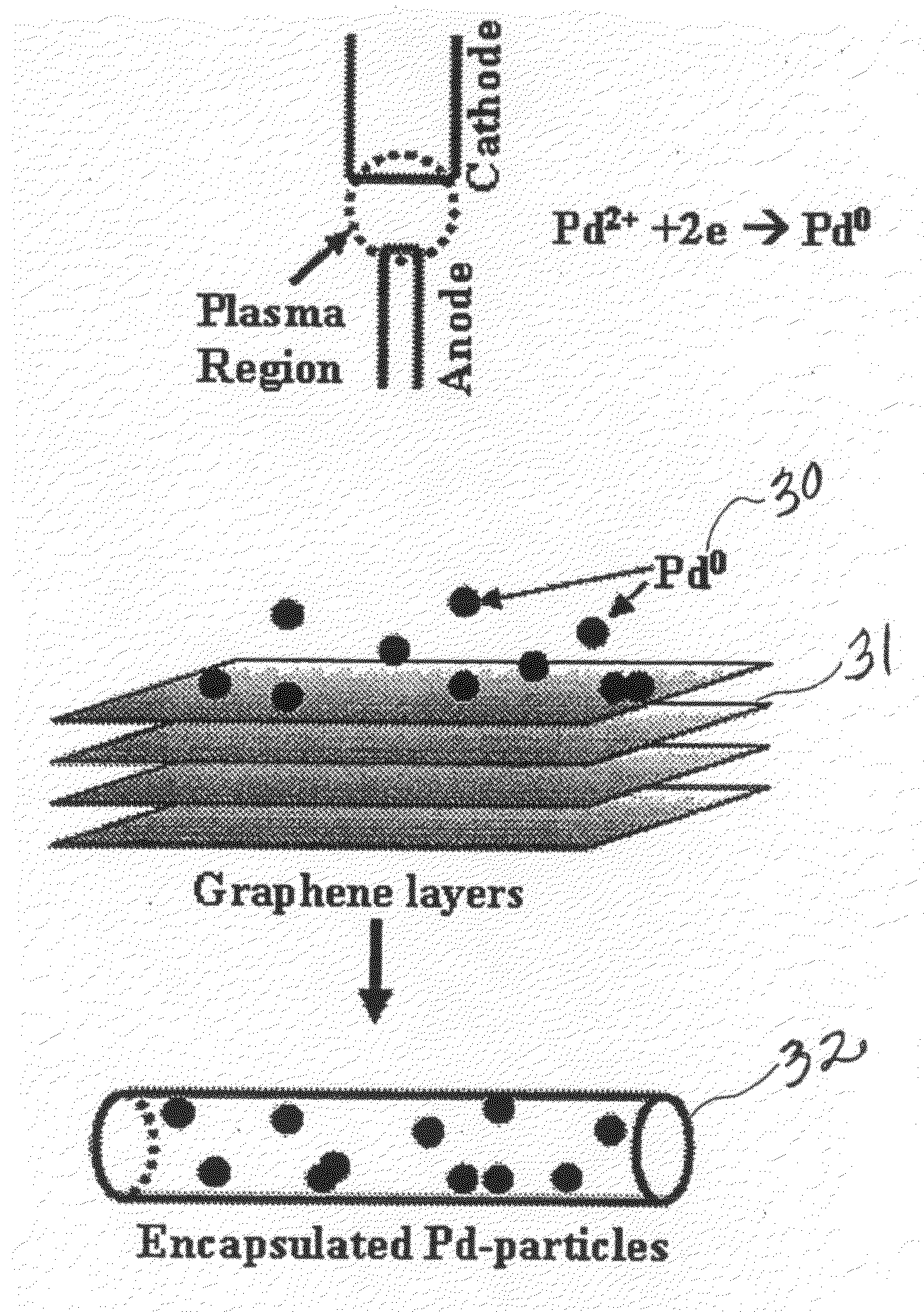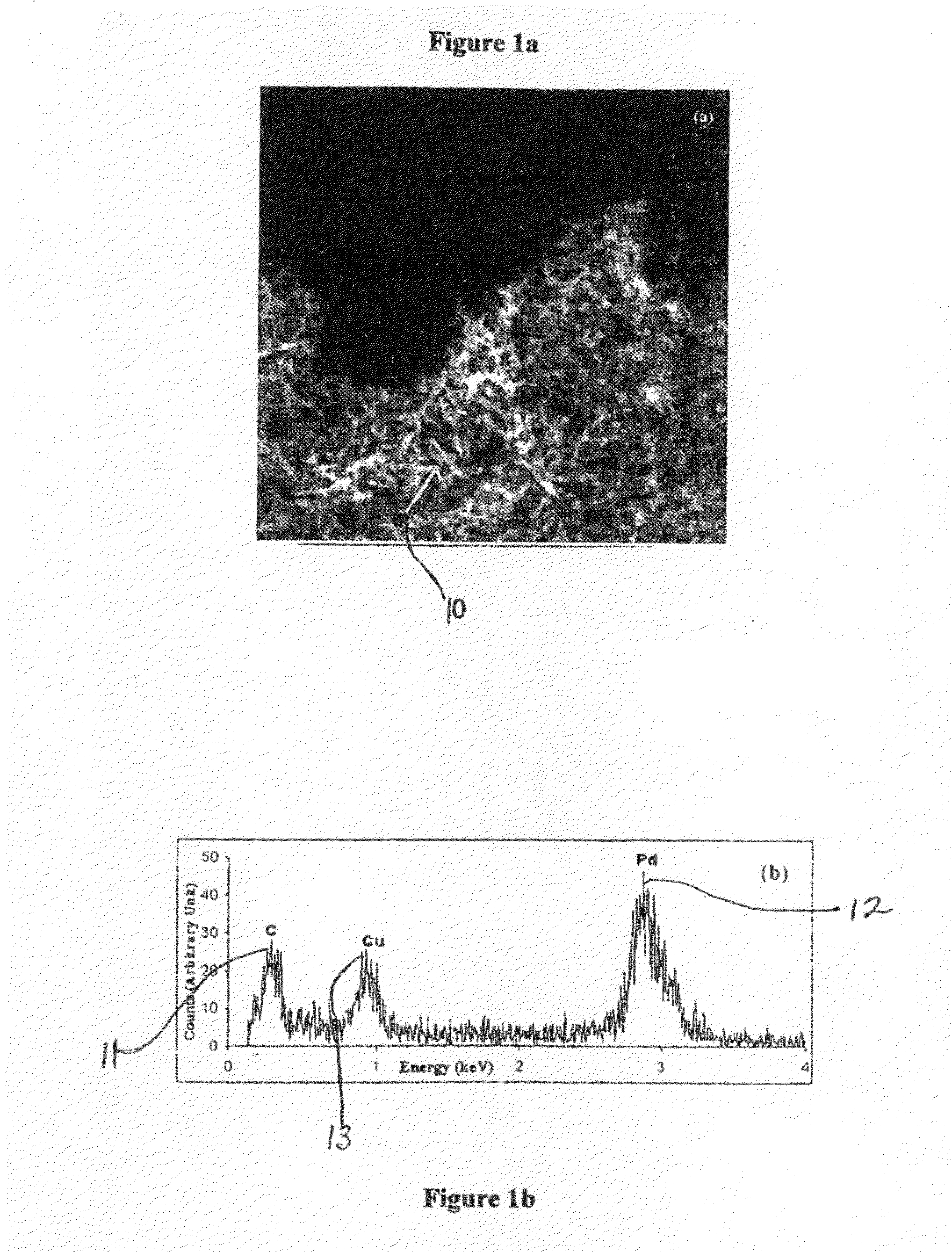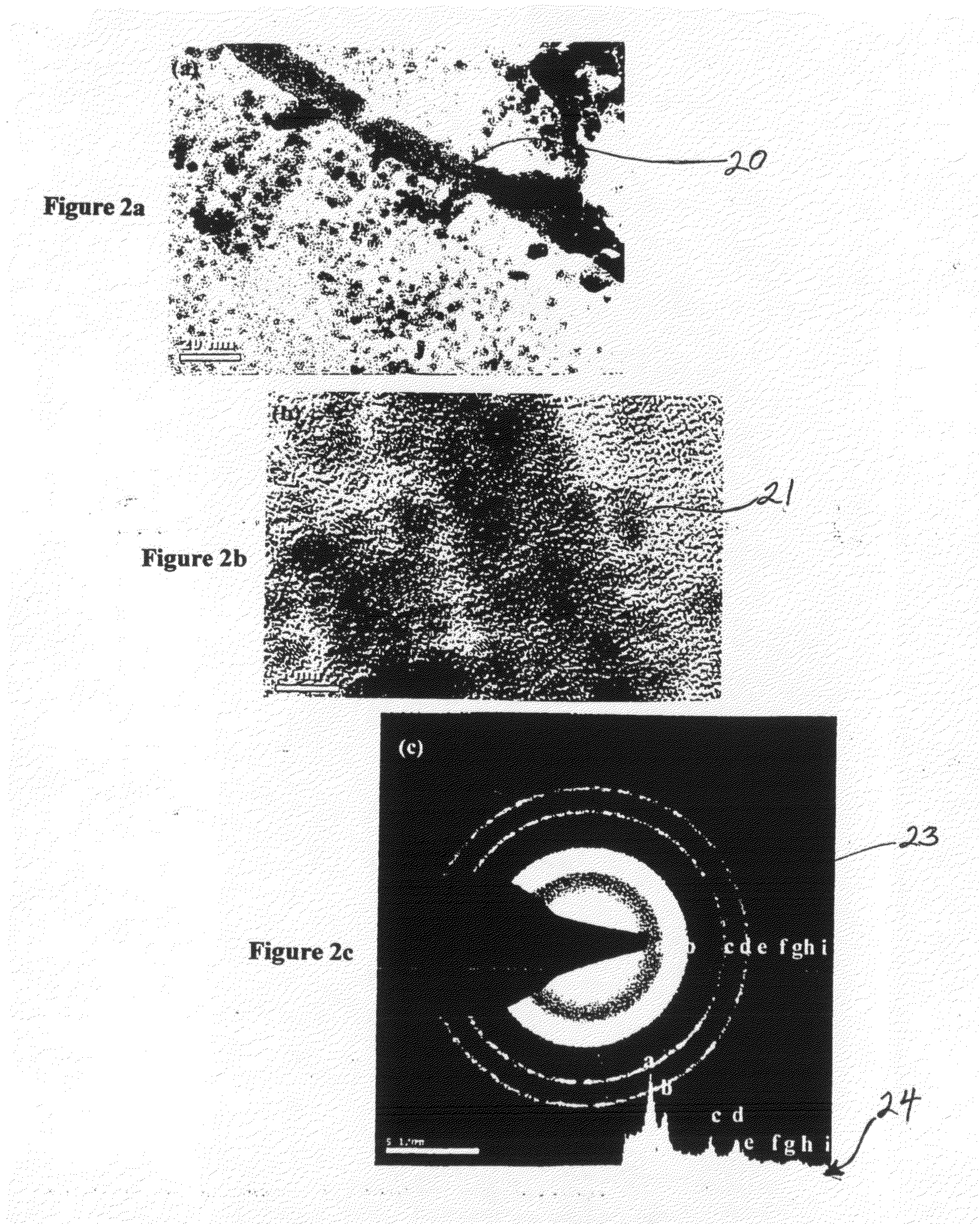Synthesis of carbon nanotubes filled with palladium nanoparticles using arc discharge in solution
a technology of carbon nanotubes and palladium nanoparticles, which is applied in the field of carbon nanotube synthesis, can solve the problems of limiting the functional capacity of various applications, limiting the bulk of nanotube production, and inefficient additional filling steps
- Summary
- Abstract
- Description
- Claims
- Application Information
AI Technical Summary
Benefits of technology
Problems solved by technology
Method used
Image
Examples
example
[0060]A palladium chloride solution of 2 milli molar (mM) concentration is prepared by dissolving PdCl2 powder with 99.999% purity in de-ionized water. In order to ensure complete dissolution of the palladium chloride, hydrochloric acid is added to have its concentration 0.1 molar (M) in the solution. Palladium chloride and hydrochloric acid are obtained from Sigma-Aldrich Chemical Company. The resistance of the de-ionized water used in the present invention is greater than 10 MΩ. Synthesis of CNTs filled with Pd-nanoparticles is carried out in a reactor containing the palladium chloride solution. Two graphite electrodes, acting as a cathode and an anode, are immersed in the reactor containing the 2 mM PdCl2 solution. The diameters of the graphite rods used for cathode and anode are 3.05 mm and 12.70 mm, respectively. The anode and cathode materials are obtained from Alfa Aesar with 99.9995% and 99.0% purity, respectively. A direct current power supply (Model: DUAL MIG 131 / 2) manufa...
PUM
| Property | Measurement | Unit |
|---|---|---|
| temperature | aaaaa | aaaaa |
| temperature | aaaaa | aaaaa |
| inner diameter | aaaaa | aaaaa |
Abstract
Description
Claims
Application Information
 Login to View More
Login to View More - R&D
- Intellectual Property
- Life Sciences
- Materials
- Tech Scout
- Unparalleled Data Quality
- Higher Quality Content
- 60% Fewer Hallucinations
Browse by: Latest US Patents, China's latest patents, Technical Efficacy Thesaurus, Application Domain, Technology Topic, Popular Technical Reports.
© 2025 PatSnap. All rights reserved.Legal|Privacy policy|Modern Slavery Act Transparency Statement|Sitemap|About US| Contact US: help@patsnap.com



